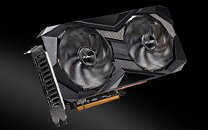- Joined
- Oct 9, 2007
- Messages
- 47,676 (7.43/day)
- Location
- Dublin, Ireland
| System Name | RBMK-1000 |
|---|---|
| Processor | AMD Ryzen 7 5700G |
| Motherboard | Gigabyte B550 AORUS Elite V2 |
| Cooling | DeepCool Gammax L240 V2 |
| Memory | 2x 16GB DDR4-3200 |
| Video Card(s) | Galax RTX 4070 Ti EX |
| Storage | Samsung 990 1TB |
| Display(s) | BenQ 1440p 60 Hz 27-inch |
| Case | Corsair Carbide 100R |
| Audio Device(s) | ASUS SupremeFX S1220A |
| Power Supply | Cooler Master MWE Gold 650W |
| Mouse | ASUS ROG Strix Impact |
| Keyboard | Gamdias Hermes E2 |
| Software | Windows 11 Pro |
AMD Radeon RX 7600 XT reportedly launches on May 25, 2023. Moore's Law is Dead scored the key dates associated with the launch. The upcoming performance-segment graphics card is rumored to be based on the 5 nm "Navi 33" silicon and RDNA3 graphics architecture. Apparently, the tech press should have its samples to test by May 15, and AMD is taking a similar approach to NVIDIA's recent GeForce RTX 4070 launch, where cards priced at MSRP will be eligible to a review embargo that's a day sooner than that of non-MSRP cards. Reviews of MSRP cards go live on May 24, with those of non-MSRP cards following the next day on May 25, along with market availability. It's no wonder that we heard reports of RX 7600 series cards being shown off at Computex, all those cards will be available to purchase by then.

View at TechPowerUp Main Site | Source

View at TechPowerUp Main Site | Source


